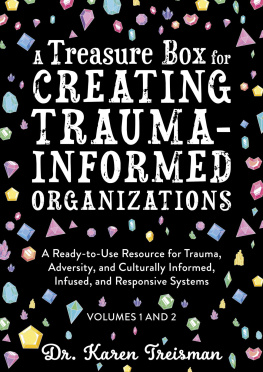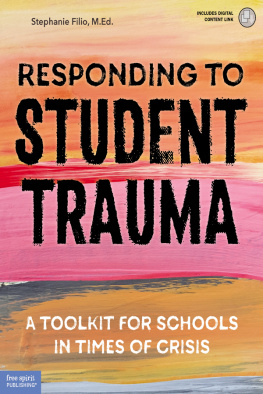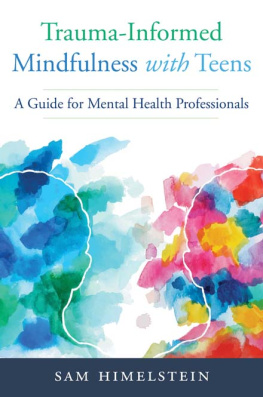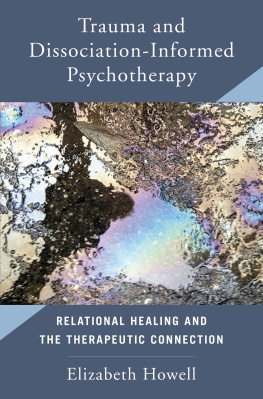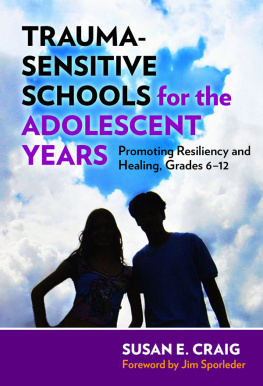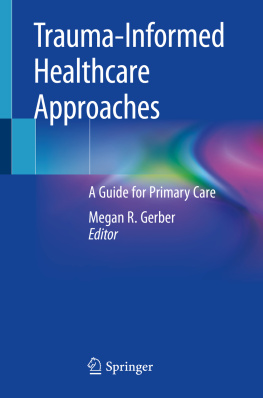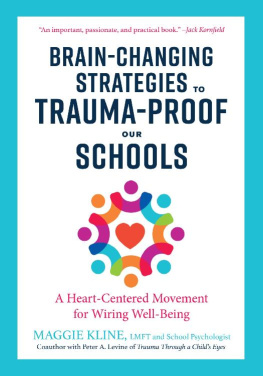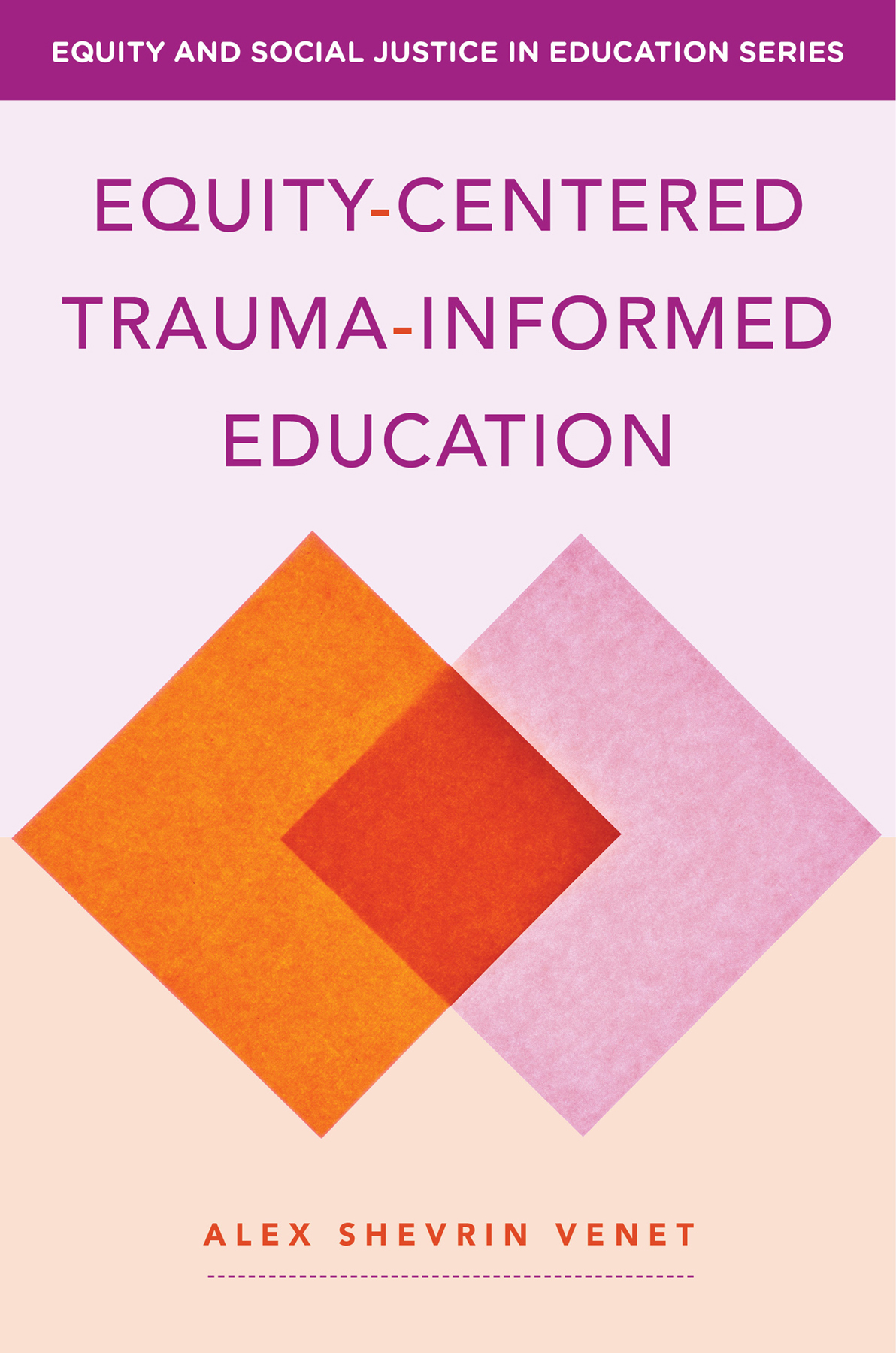Contents
Guide
Page List
Norton Series on Equity and Social Justice in Education
Cheryl E. Matias and Paul C. Gorski, series editors
Nortons Equity and Social Justice in Education series is a publishing home for books that apply critical and transformative equity and social justice theories to the work of on-the-ground educators. Books in the series describe meaningful solutions to the racism, white supremacy, economic injustice, sexism, heterosexism, transphobia, ableism, neoliberalism, and other oppressive conditions that pervade schools and school districts.
Norton Books in Education
Equity-Centered
Trauma-Informed
Education
Alex Shevrin Venet
A Norton Professional Book
This e-book contains some places that ask the reader to fill in questions or comments. Please keep pen and paper handy as you read this e-book so that you can complete the exercises within.
For my mother
Contents
I ts the early 1960s in Rochester, New York, and an elementary school girl named Gini sits in class, hoping that no one will notice shes not okay. Gini is one of three children in a seemingly typical white, working-class family. Gini is a star student at her Catholic school and doesnt get in trouble. She overachieves in her classes and gets involved in academic extracurriculars. To all outward appearances, Gini looks like the perfect student from a good family.
Appearances can be deceiving. At home, Gini and her siblings attempt to parent themselves. Their mother is diagnosed with paranoid schizophrenia, and treatments are experimental and largely ineffective. Her erratic behavior is, at best, confusing and, in the worst moments, violent. Ginis father makes himself scarce between constant work and alcohol.
Gini learns that, to survive at school and at home, it serves her well to try to be perfect. Mistakes could trigger her mothers paranoid ranting. Academic achievement and extracurriculars allow Gini to spend more time at school (and less at home). Perfection provides a way to stay under the radar, to not be seenand, consequently, not be helped.
As an adult, my mother, Gini, rarely talked about her childhood. One notable exception was in a talk she gave to her synagogue in 2012, part of an event aimed at reducing stigma about mental health issues. In her speech, she reflected: As an adult looking back, I am struck by the fact that none of my teachers ever addressed my situation at home, even on the day that my mother appeared at my elementary school in the midst of a psychotic episode. Nothing was said to me, no advice ever offered. The stigma was too much. Half a century later, how many children still go unheard because the stigma remains?
Childhood trauma does not guarantee a life of failure and struggle. My mother earned degrees in high school, college, and graduate school. She had a successful career in technology, long before women were welcome in that field. She and my dad raised me and my two brothers, providing us a loving and safe home. Nevertheless, she was changed and shaped by the events of her childhood.
Trauma Matters
When my mother was in school, the prevailing wisdom about child trauma was, Kids are resilient. Theyll get over it. Kids are resilient, but now we know that just get over it isnt the right attitude. We know more about trauma, thanks to the advocacy of trauma survivors and activists and the work of care providers and researchers across many fields: medicine, education, psychology, sociology, and more.
Heres some of what we know. About half of all children in the United States will experience at least one potentially traumatic event before age 18. This number is higher for children of color, especially Black and Latinx children, and children with disabilities are four times more likely to be maltreated (Sacks & Murphey, 2018; Thomas-Skaf & Jenney, 2020). Its challenging to get an accurate sense of the problem because child trauma is hard to measure. Many types of child trauma and abuse happen behind closed doors. Children are threatened or coerced to keep silent, so they do not report what has happened to them. Numbers about child trauma can also be misleading because children can be exposed to several types of adversity (polyvictimization) or not know to identify an experience as traumatic (Saunders & Adams, 2014). Outside of individual events, children can be exposed to trauma through community factors and conditions, such as the ongoing stress of living in poverty. As I wrote this book, the COVID-19 pandemic spread around the globe. Time will tell how an experience of global crisis affects the children who lived through it.
For some children, stress does not become trauma. While some point to resilience as a strength or an asset of individual children, the research on resilience takes a more ecological approach in which a childs capacity to respond to challenges is supported by interlocking systems like family, community, and access to resources (Masten, 2018). Children with access to that supportive community are more likely to recover from stress and not experience lasting challenges. For other children, their response to threat and danger causes enduring negative psychological, physical, and spiritual harm. This response is called trauma, and it captures a wide range of effects that vary person to person.
The current consensus also says that no amount of just pushing past it helps people heal from trauma. To recover from trauma, we first need to reestablish a feeling of safety, emotionally and psychologically. From there, the journey is different for everyone, but we all need trusted people with whom to build relationships. We need unconditional acceptance. While trauma therapists are one possible source of support, experts in the field emphasize that healing from trauma requires a community that cares, rather than simply 50 minutes a week in a therapists office (Perry & Szalavitz, 2017; Herman, 1992/2015). Teachers, coaches, neighbors, family, and friends are just some of the members of a childs community of care.
Perhaps the teachers at my mothers school assumed that help would come from outside of their walls, or that their students could simply leave their trauma at the door. In our schools today, we cant make these assumptions. We have children in our care who are struggling with past or ongoing trauma. We are also responsible for the operation of schools that can become traumatic environments for children with otherwise supportive and safe home lives. I dont love when people use the phrase now more than ever, because our attention to our students well-being has always been important. So instead I say now, as ever, we must commit to creating trauma-informed environments for all our students.
I didnt become a teacher because of my mothers story. There are some pieces of my mothers childhood I learned only about after she gave that 2012 speech. But when I did become a teacher, I took a job at a therapeutic school where most of the students had experienced trauma. My role was counseling teacher, and I was cross-trained by clinical and educational staff to provide both academic and therapeutic support to our students. I eventually became a school leader there. Within this setting, I was part of a community dedicated to creating better outcomes for our trauma-affected students. As an alternative school, we strove not to recreate the norms of public school in a smaller setting but instead to build a new way of doing school from the ground up, with the needs of our students at the center. We made every decision about our schools operation with care and intention, from the design of our classrooms to how we served lunch, as well as the common language we used with students and one another. The mission of our school was grounded in unconditional care for our students, and everything we did had to be aligned with that care.


